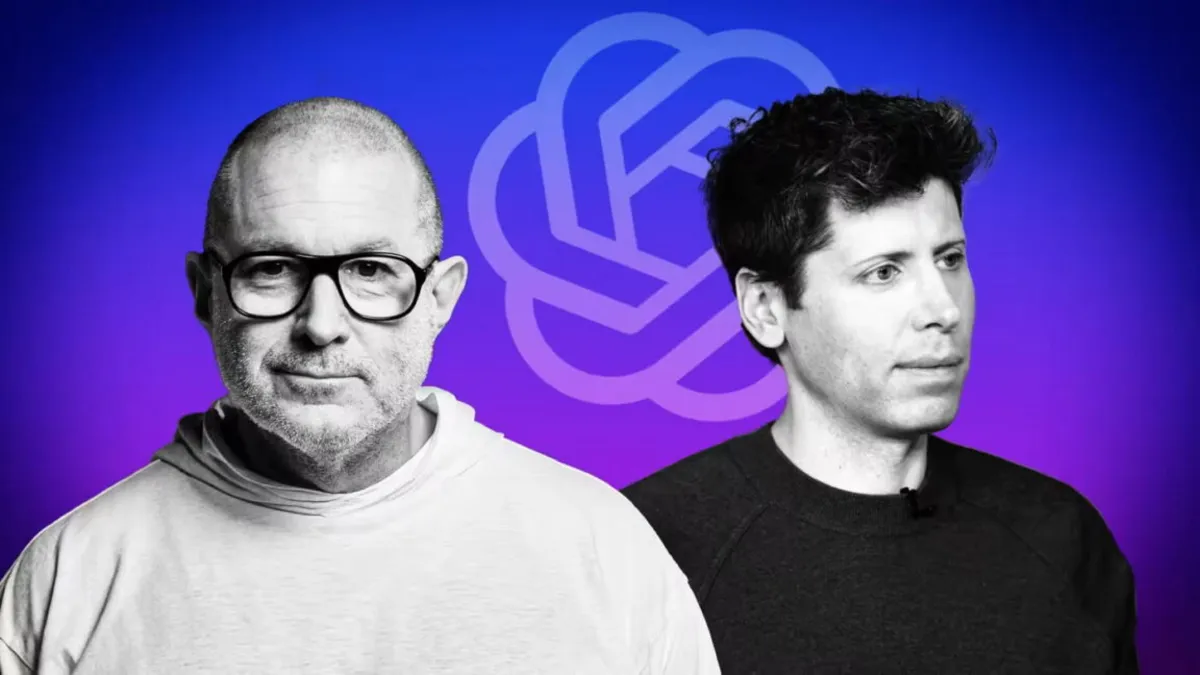
OpenAI and renowned designer Jony Ive are currently navigating a range of technical challenges with their ambitious new artificial intelligence device. As they aim to launch this groundbreaking tech product next year, the San Francisco-based startup, led by Sam Altman, is working closely with Ive’s design firm, which was acquired for a staggering $6.5 billion in May. Despite the partnership, details about their project remain largely under wraps.
The goal of this collaboration is to develop a palm-sized device devoid of a screen, capable of interpreting audio and visual cues from its surroundings. This innovative gadget is designed to respond intuitively to user commands, enhancing the way individuals interact with technology. However, sources familiar with the project have indicated that OpenAI and Ive are yet to overcome critical obstacles that could potentially delay the device's release.
While the hardware, crafted by Ive and his talented team—known for iconic designs such as the iMac, iPod, and iPhone—has been developed, significant hurdles remain in the realm of software and the necessary infrastructure to support it. Key challenges include establishing the device’s “personality,” addressing privacy concerns, and budgeting for the computational power essential for running OpenAI’s advanced models on a consumer-friendly device.
“Compute is another huge factor for the delay,” remarked a source close to Ive. The competition is fierce, as tech giants like Amazon and Google have the computational resources needed for their devices, such as Alexa and Google Home. In contrast, OpenAI is currently struggling to secure adequate computing power for ChatGPT, complicating their efforts to deliver a new AI device.
According to insiders, the technical difficulties encountered are typical during the product development phase. The envisioned device is expected to be approximately the size of a smartphone, equipped with a camera, microphone, and speaker for user interaction. Speculations suggest it might feature multiple cameras to enhance functionality.
This innovative gadget is intended to be used both as a stationary item on a desk or table and as a portable device that users can carry. Reports indicate that the device will be “always on,” continuously gathering data throughout the day to build its virtual assistant's “memory,” creating a more personalized experience for the user.
Recently, OpenAI surpassed Elon Musk’s SpaceX to become the world’s most valuable private company, with a valuation of $500 billion. To justify this remarkable price tag, the company is making strides into hardware development, aiming to improve upon the traditional “smart speakers” of the past decade, including Amazon’s Echo and its Alexa digital assistant, which have limited functionalities.
OpenAI and Ive are striving to create a more robust and versatile device that offers enhanced capabilities. However, settling on the device’s “voice” and mannerisms has proven to be a challenge. It's crucial to ensure that the device engages users meaningfully, knowing when to contribute to conversations without becoming overly verbose—an issue that has plagued ChatGPT.
The overarching concept is to design a friendly AI companion that transcends existing digital assistants like Apple’s Siri. “The concept is that you should have a friend who’s a computer who isn’t your weird AI girlfriend,” explained a source briefed on the plans. OpenAI aims to create a device that is accessible yet not intrusive, balancing the device's personality traits.
“Model personality is a hard thing to balance,” another insider noted. The AI must be helpful without being overly flattering or excessively direct, ensuring it does not fall into a repetitive feedback loop.
Entering this challenging market will not be easy. For instance, AI companions like “Friend,” a wearable device, have faced criticism for their perceived creepiness and personality flaws. Similarly, an AI pin developed by Humane, a company backed by Altman, has been scrapped. Despite these setbacks, OpenAI is aggressively hiring to bolster its hardware division, successfully recruiting over 20 former Apple hardware experts from Ive’s network.
Additionally, OpenAI has brought on board at least a dozen other device experts from Apple this year, as well as talent from Meta’s team that worked on the Quest headset and smart glasses. The company is also collaborating with Chinese contract manufacturers, including Luxshare, to bring its first device to market, though assembly may occur outside of China.
As both OpenAI and LoveFrom (Ive’s design group) continue their development efforts, they remain tight-lipped about their progress and forthcoming innovations.